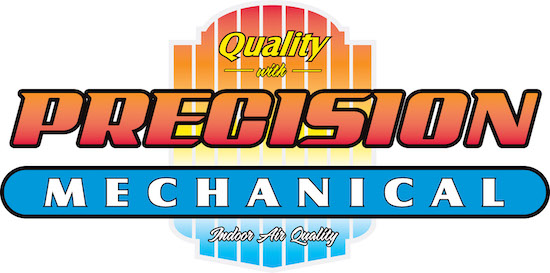
You shouldn’t have to give up comfort or drain your wallet to keep your home at the right temp during summer weather.
But what is the right temperature, exactly? We discuss advice from energy professionals so you can find the best setting for your loved ones.
Here’s what we advise for the most energy-efficient setting for air conditioning in Rapid City.
Recommended Thermostat Settings for Summer
Most families find placing the thermostat at 72-73 degrees provides ideal comfort. However, if there’s a sizeable difference between your indoor and exterior temperatures, your electrical bills will be greater.
These are our suggestions based on the U.S. Department of Energy (DOE) and ENERGY STAR®.
While at home: 78 degrees. While that seems warm, there are ways you can keep your house refreshing without having the AC going constantly.
Keeping windows and blinds down during the day keeps cool air where it belongs—within your home. Some window coverings, including honeycomb shades or plantation shutters, are made to deliver added insulation and enhanced energy efficiency.
If you have ceiling fans in your house, the DOE says you can increase thermostat temperatures about 4 degrees warmer without sacrificing comfort. That’s because they refresh with a windchill effect. Because they cool people, not areas, shut them off when you move from a room.
If 78 degrees still seems too warm at first glance, try running a test for approximately a week. Get started by upping your setting to 78 degrees while you’re home. Then, progressively decrease it while using the ideas above. You could be astonished at how cool you feel at a hotter temperature setting.
While away: 88 degrees. There’s no rationale for keeping the air conditioning working all day while your house is unoccupied. Switching the setting 7–10 degrees higher can save you as much as 5–15% on your electrical expenses, according to the DOE.
When you get home, don’t be tempted to switch your thermostat under 78 to cool your house faster. This isn’t effective and often results in a more expensive cooling cost.
A programmable thermostat is a helpful approach to keep your temperature under control, but you have to set programs. If you don’t utilize programs, you risk forgetting to change the set temperature when you go.
If you’re looking for a convenient resolution, consider installing a smart thermostat. This thermostat links with your phone, so it knows when you’re at your house and when you’re gone. Then it instinctively changes temperature settings for the best savings. How much exactly? Usually $180 annually on heating and cooling, according to ENERGY STAR.
Another benefit of installing a smart thermostat? You can use your phone to monitor and change temperature settings from nearly anywhere.
While sleeping: Around 70 degrees. While ENERGY STAR advises 82 degrees, that might be unpleasant for most families. Many people sleep better when their sleeping area is cold, so that’s why the National Sleep Foundation advises 60–67 degrees. But that might be too cool, based on your clothing and blanket preference.
We advise following an equivalent test over a week, setting your thermostat higher and progressively decreasing it to pinpoint the right setting for your residence. On cool nights, you could find keeping windows open at night and using a ceiling fan is a better option than using the air conditioner.
More Methods to Save Energy This Summer
There are additional approaches you can conserve money on AC bills throughout the summer.
- Upgrade to an energy-efficient AC system. Central air conditioners only are effective for about 12–15 years and get less efficient as they become older. An updated air conditioner can keep your house cooler while keeping AC costs down.
- Set annual air conditioner maintenance. Annual air conditioner maintenance keeps your system operating smoothly and could help it work at better efficiency. It may also help extend its life expectancy, since it allows technicians to spot little problems before they lead to a major meltdown.
- Put in new air filters often. Read manufacturer instructions for switching your air filter. A dusty filter can lead to your system short cycling, or run too much, and increase your cooling.
- Inspect attic insulation levels. Almost 90% of houses in the USA don’t have adequate insulation, according to the Insulation Institute. Most southern climates need 13–14” of attic insulation, while northern climates should have 16–18”.
- Have your ductwork examined. Ductwork that has loosened over time can leak cold air into your attic, walls or crawl space. This can create big comfort issues in your residence, like hot and cold spots.
- Seal holes, doors and windows. Keep hot air where it should be by closing cracks. You can also caulk or weather strip doors to keep more cold air within your home.
Save More Energy This Summer with Precision Mechanical
If you need to conserve more energy during hot weather, our Precision Mechanical pros can provide assistance. Give us a call at 605-206-3766 or contact us online for more information about our energy-saving cooling solutions.











